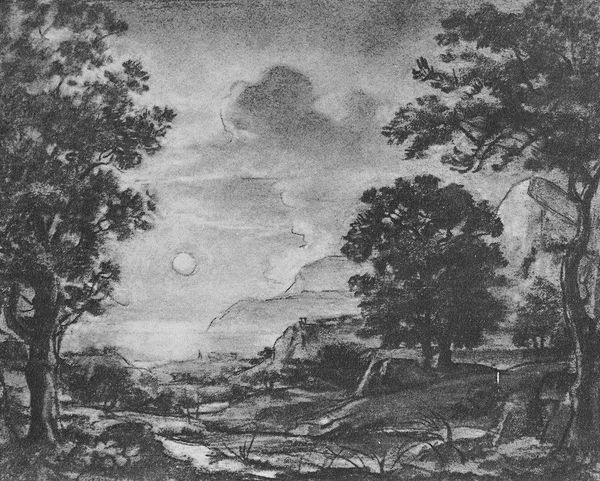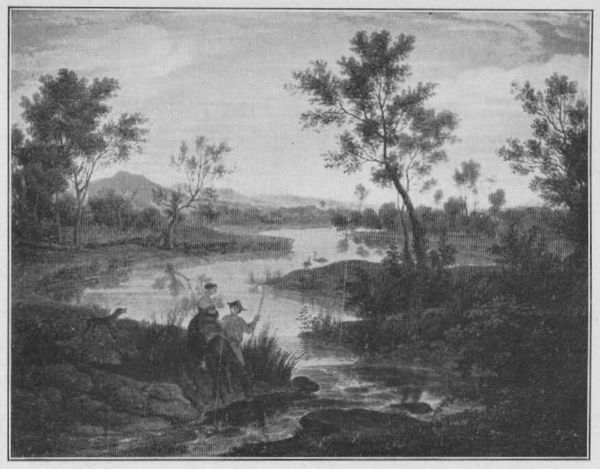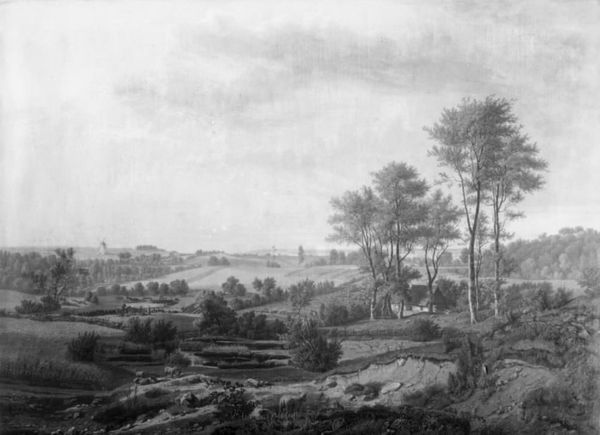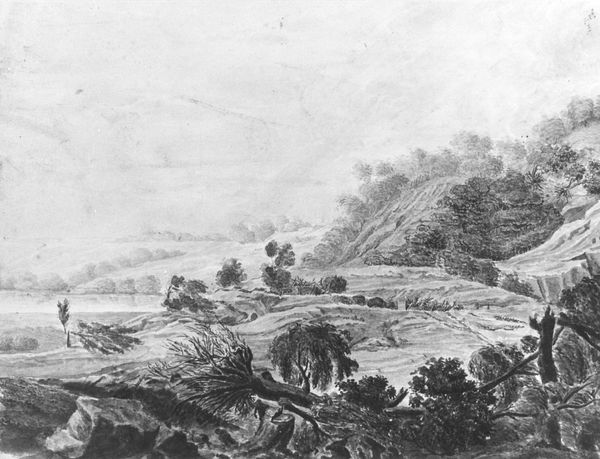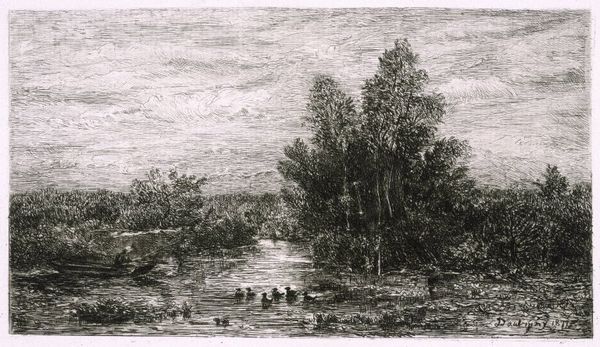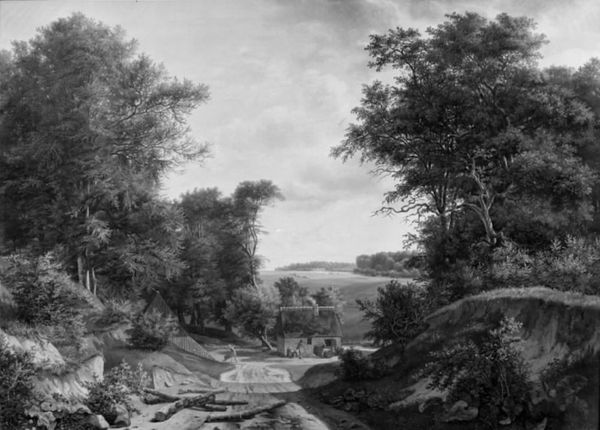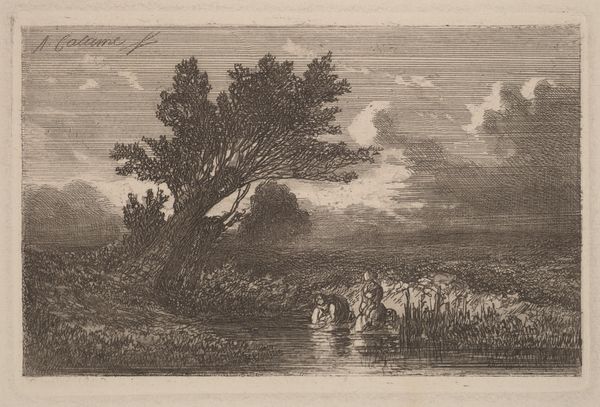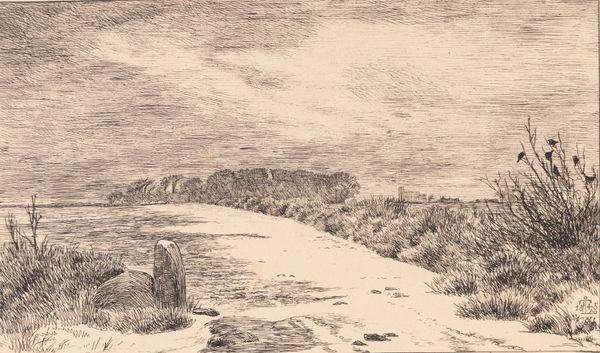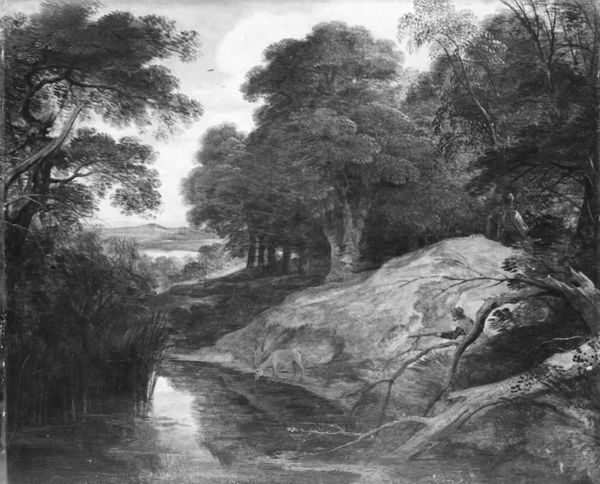
drawing, pencil
#
tree
#
drawing
#
rippled sketch texture
#
natural shape and form
#
natural formation
#
impressionism
#
organic shape
#
textured surface
#
textured
#
landscape
#
forest
#
organic pattern
#
pencil
#
line
#
natural texture
#
organic texture
#
natural form
#
realism
Copyright: Public domain
Charles-François Daubigny made 'The Clump of Alders' using etching; it embodies the artist's profound connection to the French countryside. Daubigny, a pivotal figure in the transition from Realism to Impressionism, found solace and inspiration in nature, often painting en plein air. This print, with its intricate lines and tonal variations, offers a glimpse into Daubigny’s personal relationship with the landscape. While the scene appears serene, it's important to consider the socio-political backdrop of 19th-century France, a period marked by industrialization and urbanization. Daubigny's choice to depict untouched landscapes can be seen as a commentary on these changes, an assertion of the value of the natural world amidst increasing industrialization. Through his art, Daubigny invites us to reflect on our own relationship with nature, and the importance of preserving its beauty for future generations.
Comments
No comments
Be the first to comment and join the conversation on the ultimate creative platform.



